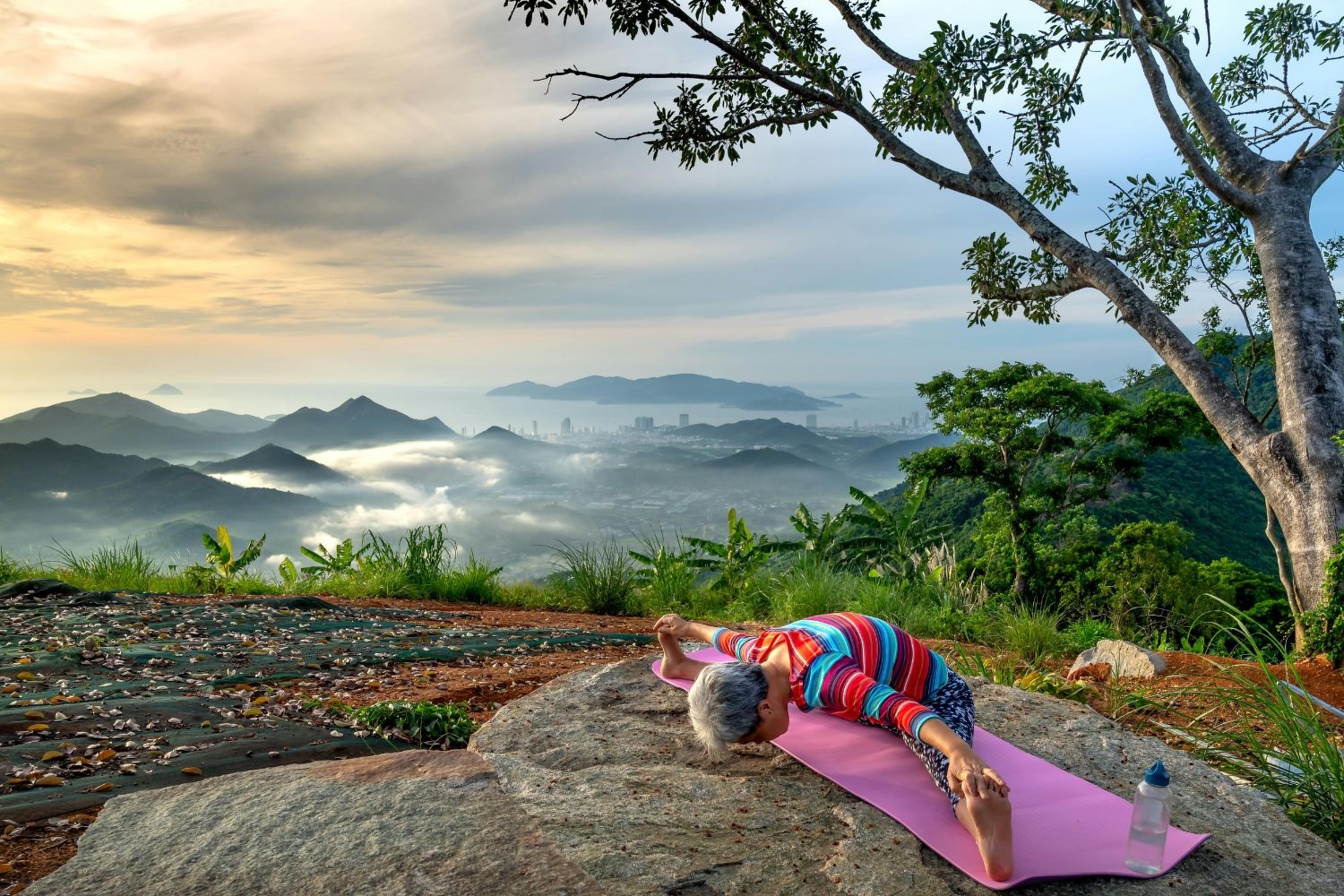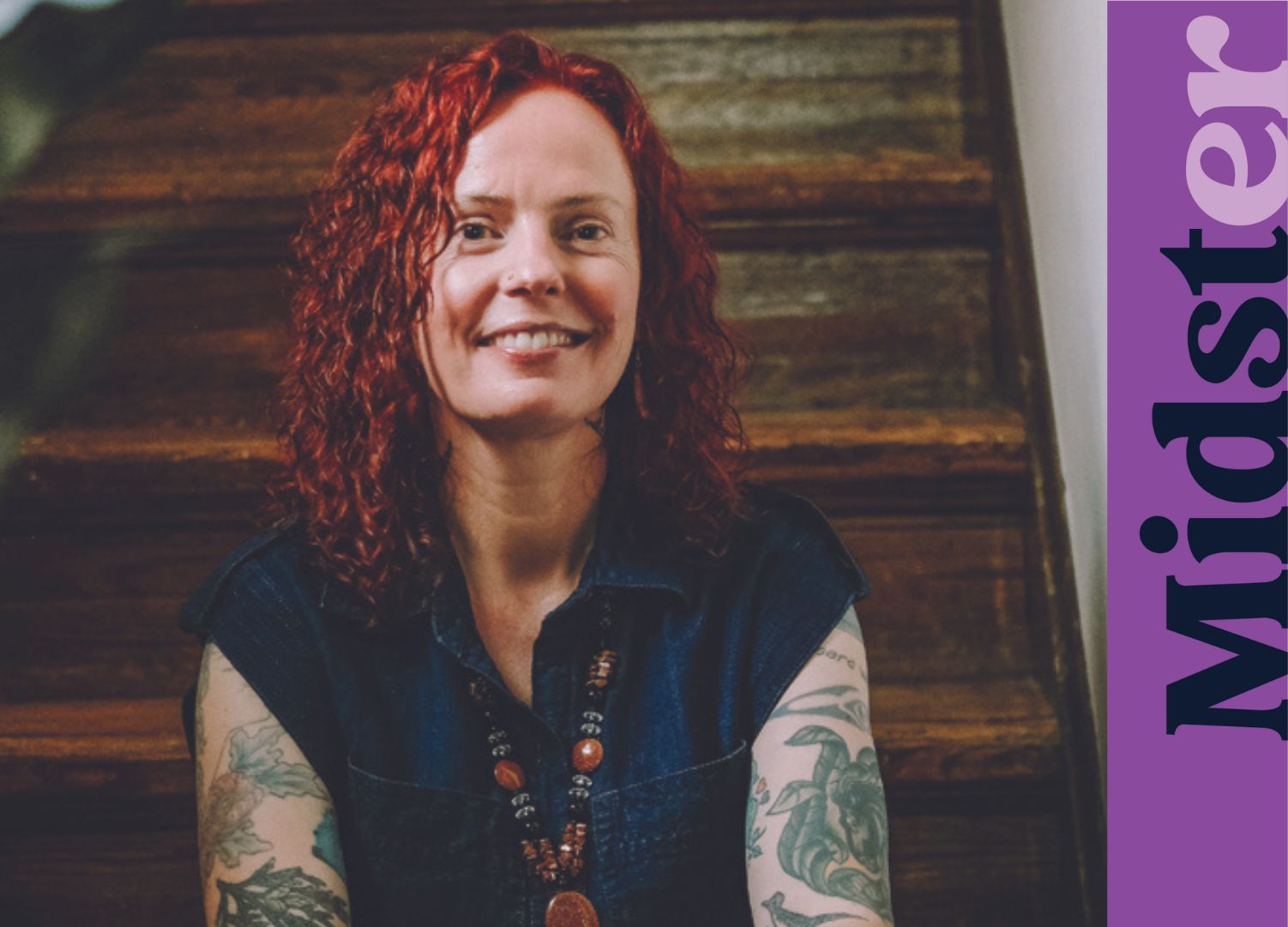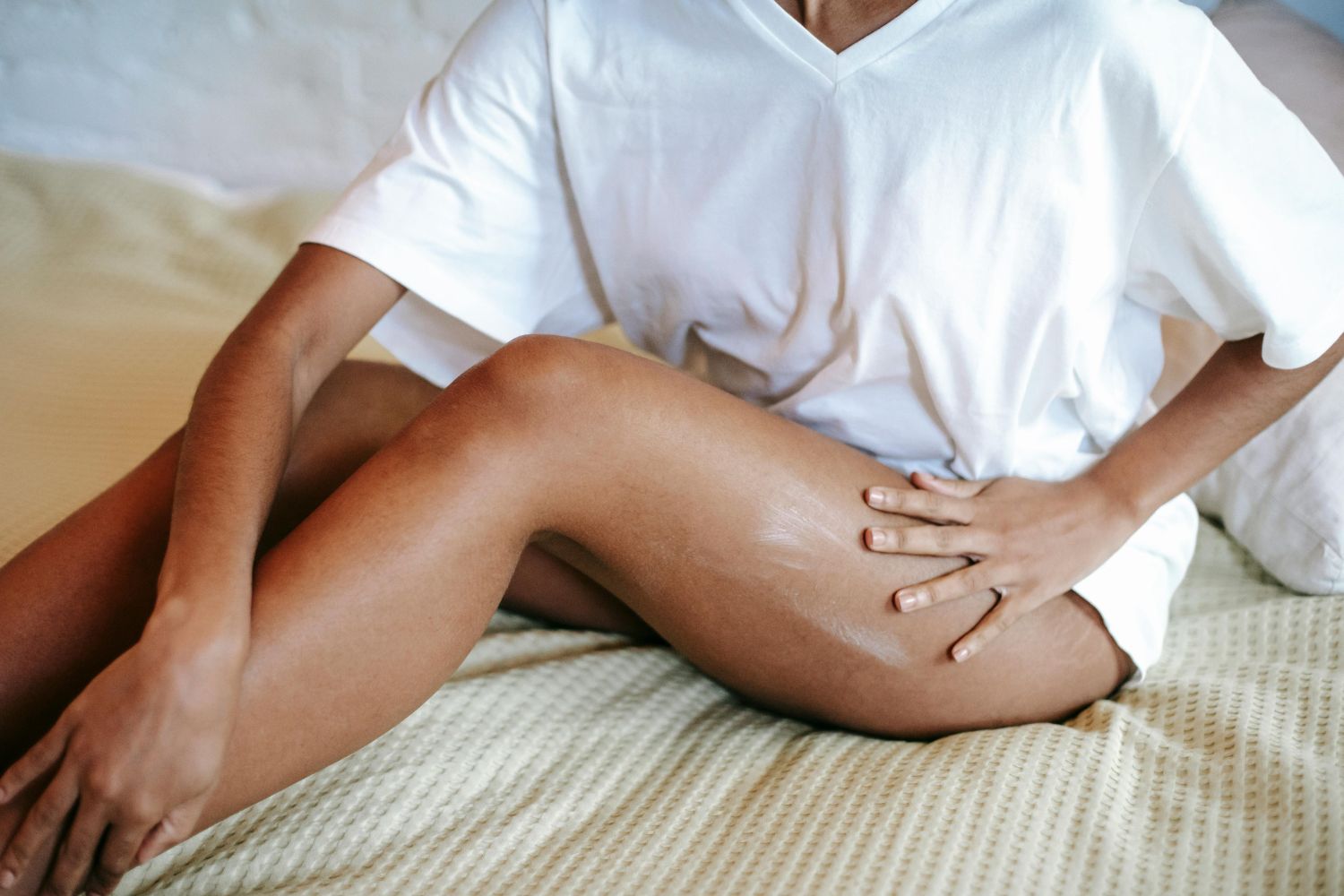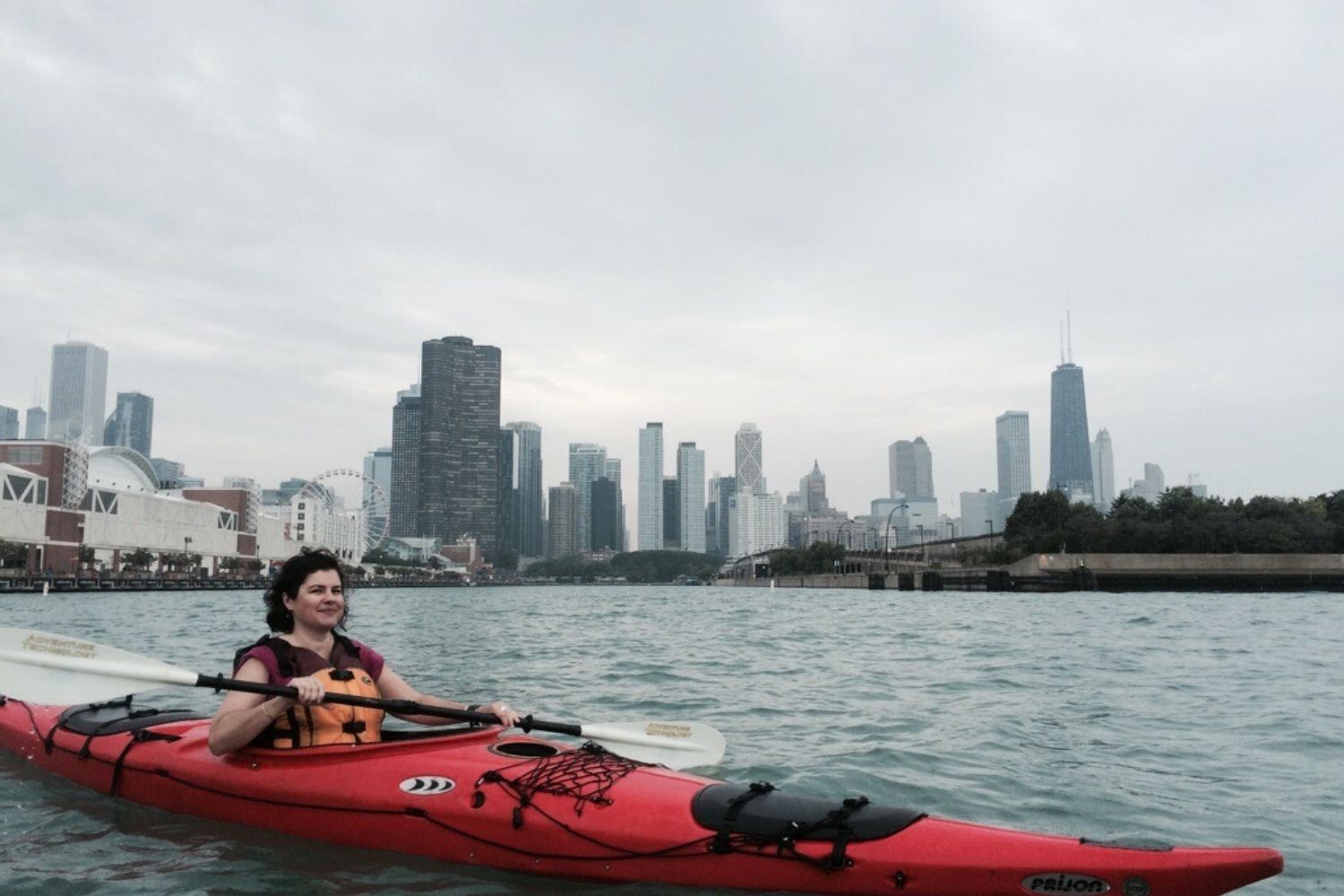
Sporty af: Learning to love the great outdoors in midlife
“I’m right here,” said the kayak instructor. “You’re not going to drown.”
I was in a sea kayak just off the shore of Lake Michigan in Chicago. As part of an intensive course, I had to show I could extricate myself from the cockpit in an accident. This involved deliberately capsizing, then pulling off the spray skirt, a stretchy piece of equipment you wear over your body that fits over the lip of the cockpit to keep water out, while upside down.
My anxiety was so intense that I started to hear buzzing in my ears. Even though it wasn’t a particularly difficult maneuver and I knew I could do it, the thought of being upside-down underwater was terrifying.
Getting increasingly embarrassed as my instructor waited patiently, I gulped some air and forced myself to tip the kayak over. Breathing out so that the cold lake water wouldn’t rush into my nose. I pulled the skirt off, slipped out, and emerged at the side of the kayak. The whole thing took about three seconds.
“See?” said my instructor. “I knew you could do it.”
Later I posted a picture of myself kayaking on social media. “My transformation into an outdoorsy person is complete,” I joked. And the funny thing is, my conversion into an enthusiastic kayaker, hiker, swimmer, and more didn’t happen until I was in my 40s.
Biking: The gateway activity
Growing up, I was the classic bookworm, the uncoordinated and awkward kid always picked last in gym class. Living in a high-income suburb in Chicago’s ritzy North Shore, I had friends who went on ski vacations and took tennis lessons, but we didn’t have money for things like that. Being outdoorsy and active seemed to involve a lot of expensive gear, a country club membership, and the ability to travel to faraway locales.
However, one piece of equipment was within our means: a bicycle. I rode incessantly around our block, testing myself to see how many times I could do it without touching the handlebars. When I moved to the city as a young adult, I rode my bike to explore different neighborhoods, ride along the lakefront, and enjoy a mini nature escape in one of the area’s many forest preserves. It also was a way to combat my anxiety and depression, although I didn’t realize it at the time.
I started riding more, biking to work and to errands. I often got questions from family members, friends, and coworkers. Wasn’t it dangerous? Didn’t I get too sweaty for the office? How did I carry all my stuff? The first time this happened, I started to stammer something about how it was good exercise and beneficial for the environment, but then I realized I did it mainly for fun. Every time I rolled on two wheels, I experienced some of that childlike glee.
I didn’t need to buy an expensive road bike — the trusty hybrid I’d had for years was fine. Nor did I start investing in Lycra and performance gear, instead choosing the bike-riding style of people in Copenhagen and Amsterdam, who look so chic as they cycle in their everyday clothes — even heels!
This realization spurred a sea change in my perspective. I realized that I enjoyed being active as long as it was in a form that I actually liked, (i.e., noncompetitive and easy to integrate into my life). I didn’t need to buy an expensive road bike — the trusty hybrid I’d had for years was fine. Nor did I start investing in Lycra and performance gear, instead choosing the bike-riding style of people in Copenhagen and Amsterdam, who look so chic as they cycle in their everyday clothes — even heels!
Morphing into one of those outdoorsy women
At age 41, I started dating a guy who also liked biking, and we often drove or took the train to different paths outside of the city. He enjoyed cross-country skiing too, and found me some gear at a thrift shop so I could accompany him. Soon, I was rooting for it to snow so I could glide around the local park or the lakefront. It helped me get through the long, gray Chicago winters.
I tried running along the paths in my neighborhood park and actually liked it, but a brutal episode of sciatica put an end to that. Trying to think of more low-impact alternatives, I suddenly remembered the existence of public pools, one of which was just a short bike ride away from my home. The first few weeks I had to stop and hang onto the ledge after every lap to catch my breath. Gradually I built up my stamina and refined my technique. The day I mastered bilateral breathing, I was so proud I posted about it on my Facebook page (and got a lot of likes). During the first year of the COVID-19 pandemic, when the pools and even the beaches in Chicago were closed, I’d wait until the lifeguards at the lake left for the day, then did my laps as the sun set.
My interest in kayaking initially stemmed from frustration at not having any wealthy friends I could mooch off for invitations on their boat. Kayak rentals and tours had started popping up, a byproduct of Chicago’s ongoing investments in beautifying the lakefront and cleaning up the river system. I signed up for a guided sunset paddle on the lake, during which we kayaked from a beach on the north side of the city all the way downtown and back, waving at boaters and watching the skyline glow as the golden hour arrived. That was it: I was hooked.
I signed up for a guided sunset paddle on the lake, during which we kayaked from a beach on the north side of the city all the way downtown and back, waving at boaters and watching the skyline glow as the golden hour arrived. That was it: I was hooked.
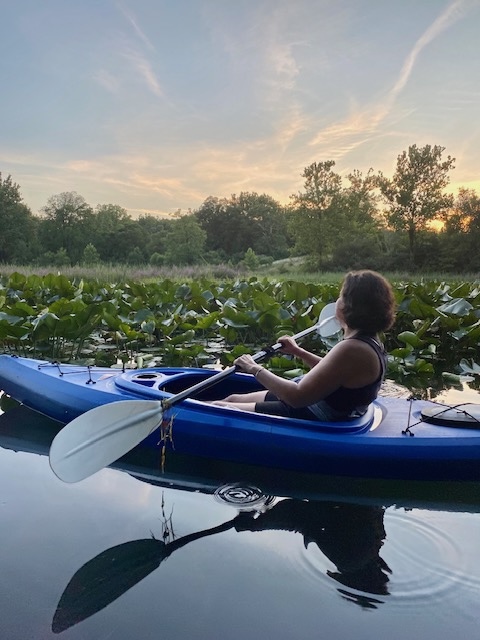
Exercise and outdoors fanaticism = a growing trend for the over-40 set
I’m far from the only woman who’s discovered her inner exercise and outdoors fanaticism later in life. In fact, it seems to be a trend among midlife women. Troy Schooley, the CEO of P3R, a Pittsburgh-based sports events management organization, says he’s seen an uptick in the number of middle-aged and older people taking part in marathons and other races. “This year so far, we have over 800 people already registered for our half marathon. Twenty-two percent of those are women over the age of 40,” he says. He credits this demographic growth to a couple of factors. First, he thinks the COVID pandemic made people appreciate the importance and pleasure of being active, as well as interacting with others. “It’s turned into kind of a social thing that they’ll bring their friends, or you know, they go out on the weekends and jog or walk or run.”
Second, he thinks there is a shift away from the competition aspect, which may make the prospect of running marathons less daunting, especially for women over 40. “Ten or fifteen years ago, I think it was a little bit elitist,” he says. “The normal 42-year-old, whether male or female, they look at a marathon, and say, ‘I could never do this.’ But then they talk to friends, and see the marketing and the messaging and they’re saying, ‘Well, maybe I can do this.’”
Melissa Wright is a co-owner of Women Who Explore, a group with around 100 chapters in the U.S. and Canada that sponsors adventure trips and organizes local events like hikes and walks. She notes that many women experience a shift in their outdoorsy and sporty mindset in middle age, “probably a lot through social media and just seeing these groups [like ours], where they discovered that they are capable,” she says.
Sometimes a divorce or a newly empty nest is the catalyst. Sometimes it’s just the experience of finally dipping a toe in. Melissa recalls a 62-year-old woman who did a multi-day camping trip with the group. “She had never even camped before,” she says. “A month later, she did her first solo backpacking trip, took her dog, and just went overnight. She then a few months later did the Peru Salkantay trek, she’s signed up this summer to do the Iceland Ring Road, and is champing at the bit to do another.”
And it’s healthy af to boot
The benefits of staying active and exercising are well-established, especially as we get older. Physical activity has been shown to prevent physical and cognitive decline as well as certain diseases — one study found that “highly fit” women are 90% less likely to develop dementia decades later. It can slow the loss of muscle loss as we age. Being active during midlife and menopause can help keep bones strong and counteract the metabolic risks of lower estrogen levels.
Beyond that, physical activity is good for our mental state. Outdoor exercise specifically can improve our mood, especially for older women. It can even be healing. That was the case for Dallas Bauer, a 53-year-old assistant school principal in Overland Park, Kansas. After she reconnected with the love of her life in 2015, the couple often walked together on area trails. When he passed away just a year and a half later, the walks became a source of comfort. “Being outside was therapeutic,” she says. “And I’m like, man, I want to do some more stuff outside.”
“Highly fit” women are 90% less likely to develop dementia decades later. It can slow the loss of muscle loss as we age. Being active during midlife and menopause can help keep bones strong and counteract the metabolic risks of lower estrogen levels.
Soon after, she heard about a local women’s adventure group, Dirty Girl Adventures, and started joining them on organized hikes. That led to meeting up with members for informal hikes and traveling to Colorado to hike with a friend she met through the group. “Later, the Dirty Girls were doing a kayak event. And I’m like, ‘Oh, I love the water,’” she says. Today she owns not one but two kayaks.
Beyond keeping her active, Dallas says, activities like hiking and kayaking are empowering. “If you do a 20-mile kayak, you’re feeling good about yourself.”
She thinks it’s important that middle-aged women get past the self-imposed beliefs or barriers that might restrict them from trying new activities, whether it’s because they don’t think they’re capable or that they keep putting it off for some undetermined future time. “Those are attainable things that you can do now. You don’t have to wait for something, you know?”

The transformation is complete
I internalized those limiting thoughts myself. For several years after my sea-kayaking lessons, I considered buying a kayak, but the challenge of transporting and carrying it on my own posed a significant obstacle. The emergence of lightweight foldable kayaks put the possibility within reach, but still I dithered. Did I really need one?
Finally, something a friend said about her experience with taking on more challenging physical activities and adventures spurred me into action:
“I realized I was waiting for someone to give me permission.”
For my part, I realized that the expense of buying a kayak was nothing compared to buying my condo or a car, but despite how much more active I was, I still thought of myself as the bookworm picked last for sports teams. My mental gatekeeping didn’t reflect my reality — that I had, to my surprise, become one of those outdoorsy types, even if I don’t outfit myself in fleece and performance fabrics.
Today, at 54, during the warmer months I often put my foldable kayak in its carrying bag, strap it onto my back, and ride my bike to a river launch near my home for a quick paddle. Besides being a good workout, it’s a chance to catch a glimpse of herons, turtles, and even beavers, as well as observe the subtle changes of the landscape through the seasons.
Today, at 54, during the warmer months I often put my foldable kayak in its carrying bag, strap it onto my back, and ride my bike to a river launch near my home for a quick paddle. Besides being a good workout, it’s a chance to catch a glimpse of herons, turtles, and even beavers, as well as observe the subtle changes of the landscape through the seasons.
I’m still far from an expert kayaker, swimmer, or skier. I like to say I’m built for endurance, not speed. And despite my higher activity level, I’ve still gained about 20 pounds over the last 10 years (thanks, perimenopause!). But I’m not doing it to look a certain way or prove something to anyone. For so long, I thought it took a specific background, natural ability, or body type to partake in these sporty activities. But there’s truly no gene for kayaking, skiing, surfing, hiking, or anything else. Don’t be your own unconscious gatekeeper — after all, one of the benefits of middle age is giving yourself permission to be mediocre at as many things as you want.

